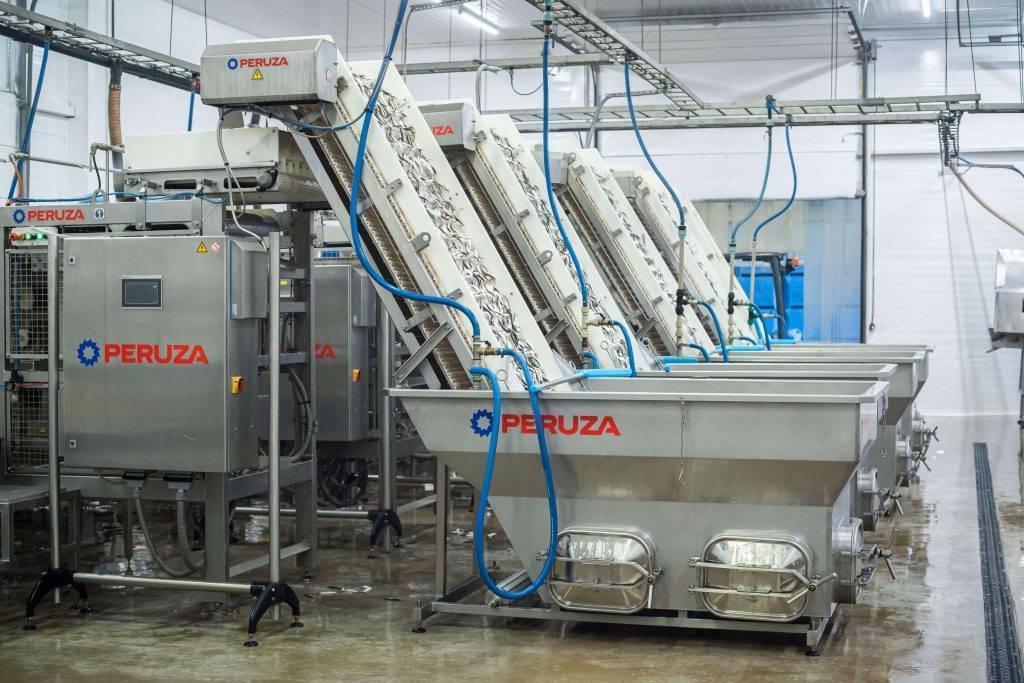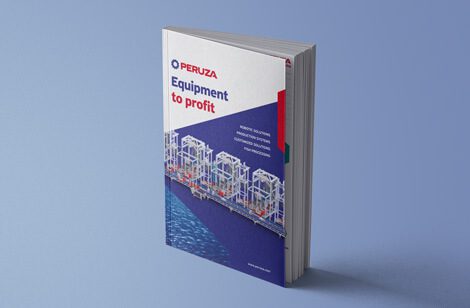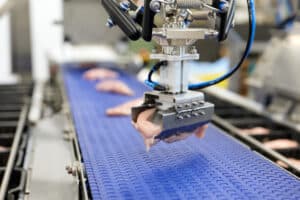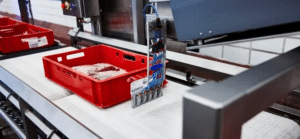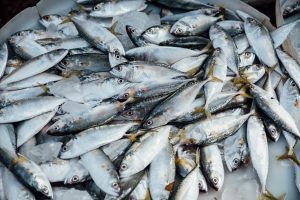Seafood and fish are still a staple in many households today and continue to be a key player in the food industry. Because of this, you won’t see seafood and fish disappearing from shop shelves anytime soon. But as seafood processing technologies and consumer tendencies change, the industry adapts and develops in parallel. Business experts estimate that the fish industry is still growing, and will reach new peaks in the near future. So, it’s a great time to enter the industry, and we are here to help you!
Here is everything you need to know about the fish processing industry and the equipment you’ll need to get started.
The fundamentals
The term fish processing encompasses many different methods of preserving fish while at the same time improving their quality. The process may also involve changing the product’s properties, and there are many ways to go about it. Some methods, such as salting and drying, have been used since ancient times, while others involve chemicals and electrical devices. Nowadays, many different technologies are used by seafood processing companies, but remember, whether you use more straightforward or advanced mechanization, the fish you use should always be fresh.
Different methods or techniques of fish processing
Salting: The salting process lowers the moisture or water content of fish and other seafood products to a point where microorganisms cannot live and grow. Sodium chloride firms up the fish, partially dehydrates it, and kills bacteria. Three basic methods of applying salt to preserve fish exist:
- Pickle Salting: Cover the fish with salt and pack them in layers in watertight containers. This will form the pickle that serves as the saturated brine solution that completely covers the fish.
- Brine Salting: Immersing the fish in a saturated solution of 25 parts of salt and 100 parts of water will temporarily preserve the product before drying, smoking, or processing.
- Dry Salting: Rubbing granular salt on the fish.
Smoking: Combined with salting, precooking, and drying, smoking is the final stage in the process, further dehydrating the fish and adding color and flavor.
Drying: Also known as natural dehydration, this lowers the fish’s moisture to a point where microorganisms, bacteria, enzymes, and yeasts cannot grow or multiply. The most popular method is solar drying, which is usually done with salting.
Curing: Uses chemical preservatives (including vinegar and salt). Cured fish or fishery products display a flavor and texture entirely different from fresh fish.
Pickling: Preserving food in brine or vinegar. A process that can be done with or without bacterial fermentation.
Cooking: This is the best way to prevent wastage or spoilage of fish. Cooking fish with vinegar prolongs the preservation period.
Canning: The packing of fish in airtight containers such as tin cans or glass jars. Through heat processing, microbes inside the can are destroyed, thus preventing spoilage under normal conditions and allowing the fish to be stored for long periods. Sardines and salmon are the most commonly canned fish on the market.
Fermentation: A method in which fish in a brine solution undergoes a chemical reaction.
What happens at a fish processing plant?
Fish processing plants, also known as processors, are facilities where numerous procedures are carried out to prepare wild-caught and farmed seafood for eventual retail consumption. As widely known, seafood is highly perishable and needs special care in order to preserve after harvesting. To maintain optimal results and reduce the chances of spoilage or poor quality, some facilities have both seafood farms and plants connected, while some are situation onboard the actual fishing vessels (though many plants are standalone). Because there is such a wide variety of species around the world of seafood, there is no universal procedure for processing. However, there can be a general flow of products. This tends to happen at most processing plants with the ultimate goal being to preserve the shelf life of the seafood. Preserving the shelf life of the seafood should always be at the forefront of any seafood factory to stay in the competition.
Steps of production at fish processing plants:
- Receipt of the product.
- Processing — including washing, chilling, skinning, gilling and gutting, fileting, shucking, cooking, smoking, salting, drying, preserving, or canning (this step varies depending on which seafood species is processed and if it is to be sold fresh or frozen).
- Storing.
- Dispatching.
- Transporting (except from retail premises to consumer, or in a vehicle from which seafood will be sold by retail).
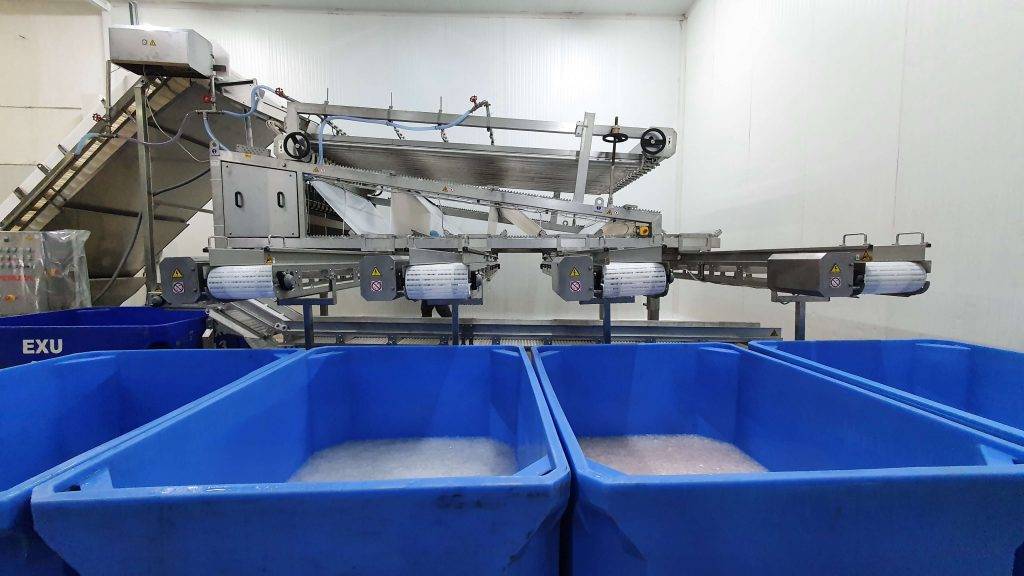
Source: PERUZA
What seafood processing machinery do you need to start?
Once the basics are clear, the next step is to plan what equipment you’ll need to enter the seafood processing industry. Although this might seem like an obvious step, it is crucial you choose the right options for your specific fish processing plant. Depending on what products you will be processing, there are many variations, but let’s begin without any specifics and with the most common phases of the production process.
Fish and seafood processing equipment
First, you must decide what type of seafood you will be processing and then choose the main processing equipment. For example, if you choose salmon, look for equipment suited for that kind of fish. One example would be a salmon deslimer and filet washing machine. This machine is designed to remove impurities and remains from the surface of fish. Desliming operates on whole fish, while filet washing operates only with filets. The washing process is essential to significantly decrease bacteria on whole or gutted fish and increase product hygiene levels.
If handling larger fish isn’t your business, something like an automatic small fish fileting machine will come in handy. The beheading and tail cut process are made with rotary knives adjusted to the required length of the final product, while degutting is achieved with a vacuum suction unit that comes after the cutting blades. This kind of machine can be used for various species of fish if they do not exceed the pocket size of the apparatus.
If your business operates on a fishing vessel and the main product is shrimp, you may need to invest in a shrimp processing line on board. PERUZA’s shrimp processing line is installed onboard the fishing vessel and is designed to ensure high-quality products without having to unload them for processing on shore. All critical processes after catching the shrimp are done directly on board. When a fishing vessel comes to shore for unloading, products are ready to be delivered straight to store shelves.
Grading equipment
Fish grading is a big part of the process. Fish are live beings, and due to their living conditions, there will always be a difference in size and quality once it’s time to harvest and process them. Because of that, grading fish or sorting fish is vitally important. Customers expect consistency in the end product, and your business can thrive or go bust because of such an important detail.
So, you’ll definitely need grading equipment. A good example is the roller grading line for pelagic fish. The roller grading unit allows fish to be divided into three grades plus an oversized grade. Grading unit rollers are deployed into a V shape with the option to adjust the gap between rollers on in, and outfeed sides. Fish slide down the gap between rollers while the gap size is smaller than the thickness of the fish. When the fish size matches the gap size, it falls through the roller gap and drops in the determining grade.
When fish must be stored in boxes by weight, weighing equipment is necessary. As an example, PERUZA’s flow weight grader can be utilized for grading fish in boxes by specific size while also considering their weight. The product to be graded is filled by the operator on an infeed fish and seafood processing conveyor belt one product per pocket.
Defrosting equipment
When working with fish or seafood, frosting and defrosting are a big part of the process, so you will also need machines for that. PERUZA’s frozen product thawing chamber is a high-capacity unit designed for frozen fish block defrosting in the chamber, using water drops and a steam environment. The quality and production speed depend on the frozen fish block size and initial temperature, as well as the fish size and freshness.
Another example of this kind of equipment is PERUZA’s Fish Defroster. The PERUZA professional fish defroster is designed to quickly defrost anchovies, sardines, and other pelagic and lake fish. It takes only 45 minutes to defrost a block of frozen fish in the PERUZA defroster, and the defrosting line ensures non-stop work of up to 1200 kg/h.
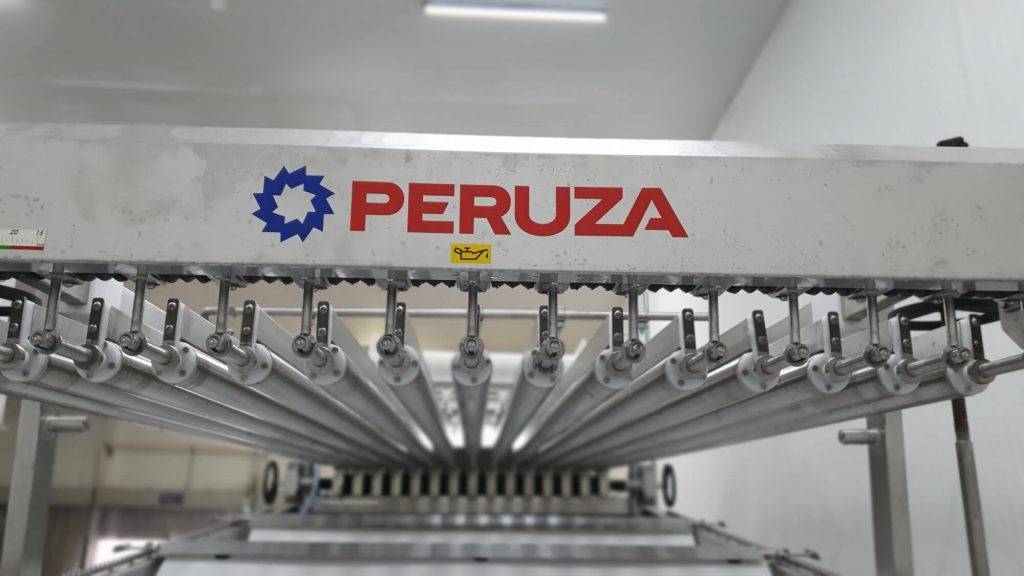
Source: PERUZA
Auto packing equipment
When everything is done, you’ll need to pack your products, right? So you’ll definitely need auto-packing equipment in your facility — something like the Robot packing solution for flow packs. PERUZA’s robot packer is designed as a high-capacity solution for various product packaging situations. The equipment can process up to 140 packages per minute. The PERUZA robotic packaging solution enables our customers to prepare shelf-ready packaging for transportation automatically, and along with the latest seafood processing software, gives a clear indication of how automation can benefit the industry.
If your final product is canned, reach for something like an auto packer for vertical cans. The auto packer for vertical cans is designed as a multi-purpose packing machine for food products. The auto packer is a suitable fish processor for different types of fresh, including quality frozen and defrosted pelagic fish, such as sardines, mackerel, or herring. The auto packer machine handles fish processing from A to Z, automatically receiving the fish, then de-heading, gutting, and canning them into vertical cans.
Environmental Sustainability in Seafood Processing
The trend of environmental sustainability is increasingly influencing the seafood processing sector. As consumers demand environmentally friendly practices, seafood processing companies are adopting technologies that minimize their ecological footprint. This involves using energy-efficient seafood processing equipment, implementing waste reduction techniques, and responsibly sourcing materials. Such sustainable practices in fish processing not only preserve natural resources but also enhance the brand image of seafood processing companies in the eyes of environmentally conscious consumers.
Therefore, new contenders in the food processing industry, especially those who are in the trenches with seafood processing equipement, need to embrace these sustainable methodologies to stay not only competitive but relevant too. Remember, it is important to note that sustainability criteria will only become more and more common in the future. With the growing concern and attention to maintaining proper environmental sustainability processes, you need this to be a core value in the foundation of your company. Failing to do so will create huge operational issues down the line as more and more environmental policies for fish processing companies to abide by will come in the future.

